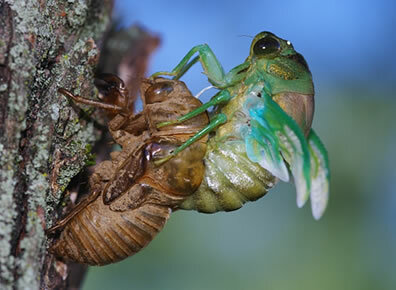are called arthropods all invertebrate animals that have a body with articulated parts, such as feet or legs. This phylum of animals is the most diverse on the planet, with more than a million known species.
You arthropods have an external skeleton called the exoskeleton, which is made up of a carbohydrate called chitin. O exoskeleton it is very hard and resistant and protects the animal's body like armor. In terrestrial arthropods O exoskeleton it is covered with a waterproof wax that prevents dehydration, ie, the loss of water to the environment.
Because they have the body covered by the exoskeleton, you arthropods they don't grow continuously and, therefore, they need to change it a few times to be able to grow.the exchange of exoskeleton called changes or ecdysis and can occur several times over the life of the animal.

Image showing an arthropod undergoing molting and leaving its old exoskeleton
When suffering the changes, the epidermis cells of the arthropod secrete a new exoskeleton under the ancient exoskeleton, which cracks allowing the arthropod go out with your new exoskeleton. O new exoskeleton it is very flexible and adapts to the animal's body as it grows. After a few minutes or hours, this new exoskeleton hardens and the animal stops growing. To the ancient exoskeleton we name exuvia.

In the image we can see a spider undergoing exoskeleton exchange, called ecdysis
Some arthropods, like most insects, they undergo a process called metamorphosis, where a transformation of your body and your way of life takes place.
You arthropods best known are the insects (ants, cicadas, butterflies), but this phylum is also composed of the crustaceans (crabs, crabs, shrimps) arachnids (spiders, scorpions), kilopods (earlings) and diplopods (snake lice).
By Paula Louredo
Graduated in Biology


